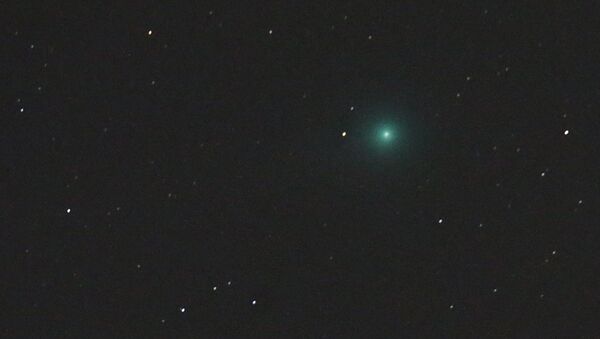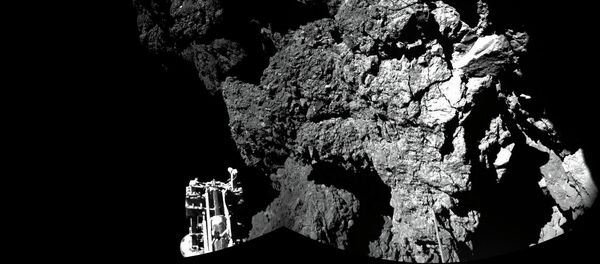The survey uses the 4-meter Victor M.Blanco Telescope located at Cerro Tololo Inter-American Observatory in Chile.
Hard to believe this is for real… Spiral galaxy seen through the tail of comet #Lovejoy! pic.twitter.com/WAaIq4J8UE
— Karl Battams (@SungrazerComets) 27 февраля 2015
At the time the image was taken, the comet was passing 51 million miles from Earth – a short distance for the Dark Energy Camera, which is sensitive enough to light up to 8 billion light years away.
The comet's center is a ball of ice roughly three miles across, and the visible head of the comet is a cloud of gas and dust about 400,000 miles in diameter, according to experts at the Fermi National Accelerator Laboratory outside Chicago, Illinois, specializing in high-energy particle physics
Comet C/2014 Q2 (Lovejoy) is one of more than 32 comets imaged by NASA's NEOWISE mission from December 2013 to December 2014. In November 2013 it was 1.7 astronomical units from the sun. (An astronomical unit is the distance between Earth and the sun.)
Comet Lovejoy was the brightest comet in Earth's sky in early 2015. On January 7 it passed closest by Earth at a distance of 44 million miles, nearly half the distance from Earth to the Sun.
To the unaided eye, Comet Lovejoy might be dimly visible as a tiny circular smudge under dark-sky conditions. Through binoculars or a wide-field telescope, it will be more obvious as a softly glowing ball. Light pollution will make it less apparent.
This is the fifth comet discovery by Australian amateur astronomer Terry Lovejoy, and he found it in images taken with his backyard 8-inch telescope.
It's a very long-period comet, meaning that the last time it passed through the inner solar system was roughly 11,500 years ago.
Slight gravitational perturbations by the planets will alter the orbit a bit, so that the comet will next return in 8,000 years.



